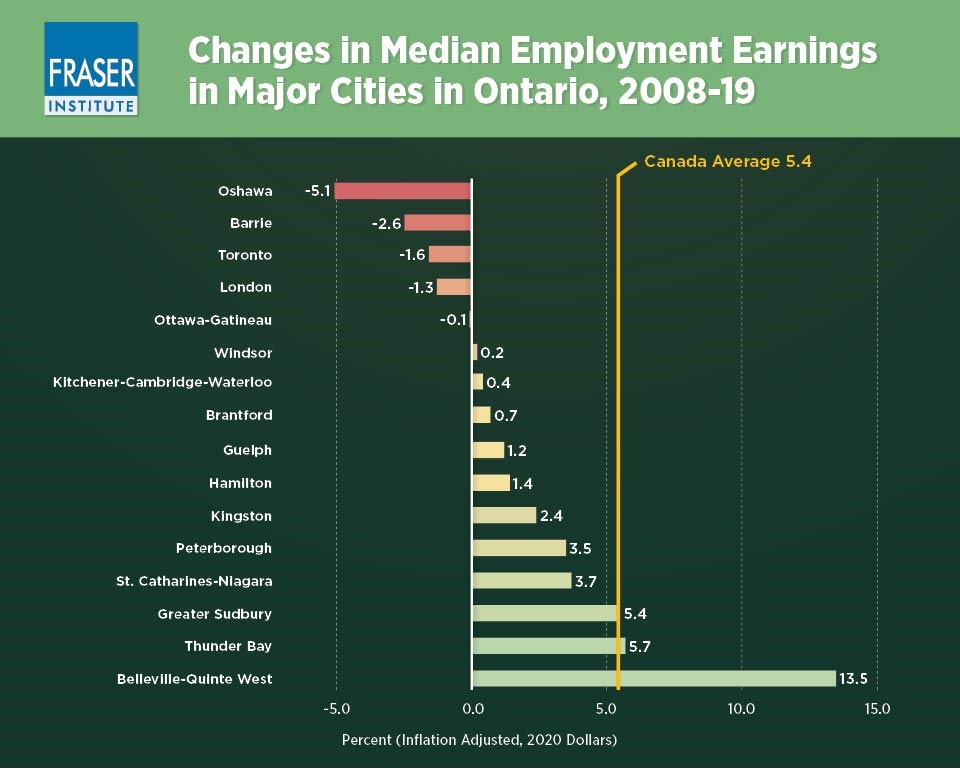Ontarians in big cities suffer from weak employment income growth

Ontario’s dismal economic performance throughout most of this century has been a topic of much discussion among economists and public policy analysts for years. The near absence of growth in many years, combined with provincial deficits and massive debt accumulation, mean the province has experienced more than a “lost decade” for many important metrices of economic health.
A recent study sheds further light on how these sad dynamics have played out at the local level in Ontario’s major urban areas.
Employment income measures wages, salaries and other forms of paid employment or self-employment income (while excluding government transfers, investment returns and other sources of income). It’s an important measure of economic health. The infographic below compares Ontario’s 16 Census Metropolitan Areas (CMAs), in terms of their inflation-adjusted growth rates of median employment income from 2008-19, with the Canadian average. The results are discouraging for Canada’s largest province.

The infographic shows that over the course of the analysis period, only three of Ontario’s 16 CMAs either matched or exceeded the national average—and only barely so in two of those cases. The 13 remaining CMAs all showed much weaker growth in median employment incomes than the national average.
It’s not just that Ontario’s CMAs are generally found in the bottom half of the Canadian table, Ontario dominates the very bottom of the rankings. Out of just six CMAs across Canada that experienced negative median employment growth, five of them are in Ontario. These include the two largest cities in the province, Toronto and Ottawa, and London, which is a regional economic hub.
Why is Ontario’s performance over this analysis period so weak? Because the province’s economic recovery following the severe 2008-09 recession was tepid. However, somebody might not necessarily know that from listening to government officials. Successive governments have suggested that Ontario’s economy has been strong. Consider this news release from 2017 during the Wynne government’s time in office boasting that Ontario’s economy was outgrowing other G7 countries.
The discrepancy between chipper government news releases and the grim numbers above is driven by the fact that population growth has driven the vast majority of economic growth in Ontario over the past 20 years. All else equal, more people leads to faster overall economic growth, but that doesn’t necessarily mean the economy is doing well. By focusing on how labour market income has evolved for the median Ontarian earner, we can cut through the spin and see how Ontario’s “lost decade” of growth has meant little growth in the size of inflation-adjusted paycheques in the biggest cities across the province.
Historically, Ontario’s cities have offered residents high paying jobs. The data clearly show that relative to the rest of the country, this has become less true in recent years. From 2008-2019 just three of Ontario’s 16 biggest metro areas beat the national average for median employment growth. Ontario was also home to five out of Canada’s six worst performers on this important indicator of economic and labour market health.
Author:
Subscribe to the Fraser Institute
Get the latest news from the Fraser Institute on the latest research studies, news and events.

